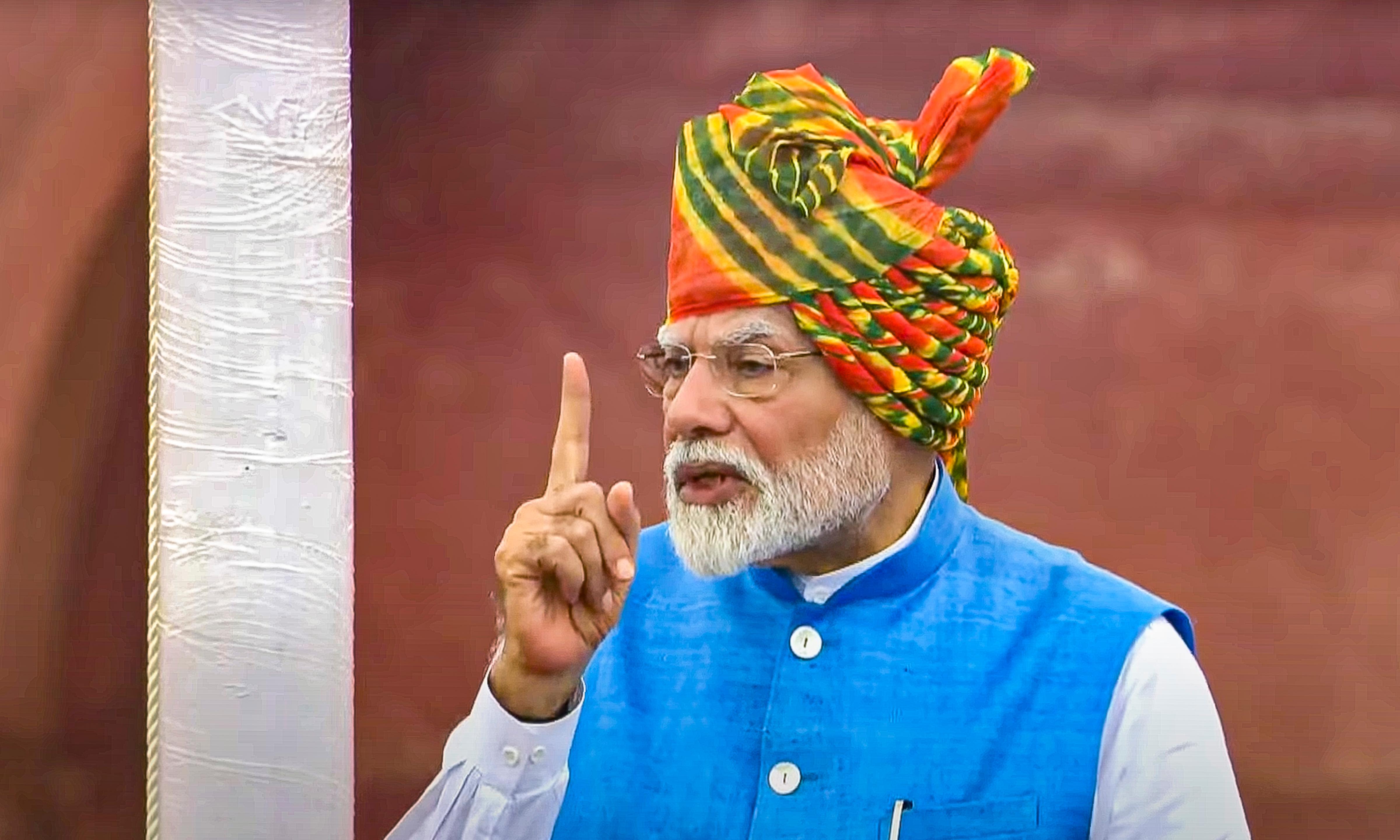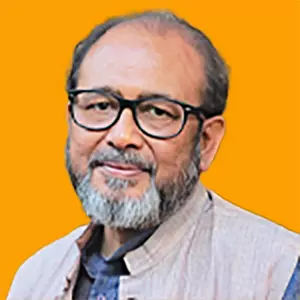
- Home
- India
- World
- Premium
- THE FEDERAL SPECIAL
- Analysis
- States
- Perspective
- Videos
- Sports
- Education
- Entertainment
- Elections
- Features
- Health
- Business
- Series
- In memoriam: Sheikh Mujibur Rahman
- Bishnoi's Men
- NEET TANGLE
- Economy Series
- Earth Day
- Kashmir’s Frozen Turbulence
- India@75
- The legend of Ramjanmabhoomi
- Liberalisation@30
- How to tame a dragon
- Celebrating biodiversity
- Farm Matters
- 50 days of solitude
- Bringing Migrants Home
- Budget 2020
- Jharkhand Votes
- The Federal Investigates
- The Federal Impact
- Vanishing Sand
- Gandhi @ 150
- Andhra Today
- Field report
- Operation Gulmarg
- Pandemic @1 Mn in India
- The Federal Year-End
- The Zero Year
- Science
- Brand studio
- Newsletter
- Elections 2024
- Events
- Home
- IndiaIndia
- World
- Analysis
- StatesStates
- PerspectivePerspective
- VideosVideos
- Sports
- Education
- Entertainment
- ElectionsElections
- Features
- Health
- BusinessBusiness
- Premium
- Loading...
Premium - Events

With no collective forum to articulate their opinion, several coalition partners have taken recourse to making public statements. And the government appears shaky and Modi’s image of a decisive leader stands eroded.
The Union government’s move to announce the Unified Pension Scheme (UPS) on Saturday (August 24) — to convey the impression that the “burial” of the currently running and contentious National Pension Scheme (NPS) was evidence of Prime Minister Narendra Modi beginning to heed the nature of this year’s electoral mandate — has come to a naught.
Various unions, which are part of the National Movement for Old Pension Scheme (OPS), an organisation of state and central government employees, say the scheme is little but the government’s ploy. They contend that the policy may be projected as a large-hearted acceptance of a key demand of various government employees’ trade unions, but in reality, the UPS is similar to the NPS.
They have reiterated their insistence on restoring the old scheme. Though no agitation has been announced yet, they clearly realize that despite his declaration to the contrary, Modi is hamstrung by his diminished stature.
An uncharacteristic meeting
On the day the government announced the UPS, Modi had an uncharacteristic appointment – a meeting with the staff side of the Joint Consultative Mechanism (JCM), the consultative body between Union government employees’ unions and the Centre. This was the first such meeting since Modi assumed office and a pointer to the pressures on him.
Among the trade unions in various sectors, the RSS-affiliated Bharatiya Mazdoor Sangh (BMS) is the largest. Since 2014, it has chosen to be broadly supportive of the government. In the changed political circumstances, it can choose to ignore the demands of various federations at the risk of losing its preeminence.
Opposition demand
The demand for the restoration of the OPS has been on the charter of Opposition parties since 2022, when it was first flagged by Akhilesh Yadav in the run-up to the Uttar Pradesh Assembly elections that year.
Subsequently, this promise was made by the Congress later that year during the state elections in Himachal Pradesh. The pledge was fulfilled by the Himachal Pradesh government led by Chief Minister Sukhvinder Singh Sukhu in April 2023.
The Centre’s attempt to blur the issue paradoxically met with some partial success. Congress president Mallikarjun Kharge declared while taking a dig at the government that the “U” in the UPS “stands for U-turn”. Sections of the media and commentariat lauded the government and asserted that the UPS indicates Modi’s willingness to meet demands of the Opposition and trade unions.
Kharge’s response and the accompanying interpretations, however, are an instance of lethargic politics and off-the-cuff journalism. In contrast, the uncompromising stance of these trade unions and their substantive response that there is considerable likeness between the UPS and NPS, establishes the Centre’s duplicity.
Failure to act as allies
Clearly, while Modi and his colleagues in the BJP feel the necessity to project being consensual insofar as new policies and litigious decisions are concerned, they remain unwilling to function like coalitions must. Since assuming power for the third time on June 9, Modi has consciously chosen not to follow the coalition dharma of consultation with other partners prior to taking key decisions.
More than two-and-a-half months after government formation, the coordination committee of the National Democratic Alliance has neither been reactivated for it to function like it did during Atal Bihari Vajpayee’s tenure, nor has its convener been selected.
With no collective forum to articulate their opinion, several coalition partners have taken recourse to making public statements. Consequently, the government appears shaky and Modi’s image of a strong and decisive leader has been eroded.
Coalition complications
Due to repeated rollbacks almost from the time that this government got down to business, it is now being seen as a regime where the prime minister’s or the dominant party’s writ is not running and instead the bits-and-pieces coalition parties are calling the shots.
Instances such as the withdrawal of the Broadcast Bill or the decision to establish a Joint Parliamentary Committee to scrutinize the Waqf Bill underscore that Modi has overestimated his hegemony.
Even in the Budget, reversing decisions on the indexation benefit on the sale of property and long-term capital gains tax point to the realization of the BJP’s loss of dominance. Likewise, the withdrawal of the advertisement on lateral entry in government demonstrates that on many issues, some coalition partners have a common cause with the Opposition.
Modi’s only success was selecting ministers
Ever since the government was formed, the only time Modi successfully exercised his prime ministerial prerogative was when he selected the ministry. Among the 72 who are members of the council of ministers (including the PM), as many as 61 are from the BJP (26 out of 31 Cabinet ministers, three out of five MoS with independent charge, and 32 of the 36 junior ministers).
Modi chose to establish continuity against “change” that the BJP’s sub-majority tally underscored. While allocating portfolios, four most important and powerful ministries were retained by those who held the charge in the previous tenure – Amit Shah, Rajnath Singh, Nirmala Sitharaman, and S Jaishankar.
Even among other ministers, Nitin Gadkari retained charge of Road Transport and Highways, which has enabled him to acquire the image of a “performer”, in contrast to colleagues beleaguered with underperformance in sectors under their charge.
Other politically significant and important ministries insofar as policies matter, agriculture, farmers welfare and rural development, health and family welfare, commerce and industry, education, railways and information and broadcasting remain with the BJP.
The 100-day plan
However, the extent of the BJP’s hegemony is limited to its leaders holding key ministries. During the campaign, Modi repeatedly mentioned that a hundred-day plan was being worked out, and significant decisions would be taken.
Unless it later appears that the government continued making plans quietly and also consulting allies, the hundred-day milestone, which draws close now, will be crossed without fanfare.
Modi’s political instinct, which was his strength for the first two terms in office, is now his biggest weakness. For instance, his Independence Day speech did not reflect a Prime Minister who no longer commands a parliamentary majority of his own and is instead dependent on coalition partners. He continued to emphasize issues that furthered the BJP’s and the Sangh Parivar’s political agenda.
Uniform Civil Code
Modi made a case once again for the passage of a “Secular Civil Code” in place of what he termed a “Communal Civil Code”. This was little but another instance of dog-whistle politics, typically BJP’s style when politically on the back foot.
But, will the allies permit him to act on this issue? Will they not force a withdrawal, like it has happened partially with the contentious Waqf Bill that was referred to a Joint Parliamentary Committee?
Modi’s personality vs coalition dharma
In his speech from the Red Fort, the prime minister also raked up another issue over which there are sharp divergences – One Nation, One Election. Because the proposal, if pursued, would require several constitutional amendments, some possibly requiring two-third majority in Parliament, this again is little but political rhetoric to drum up support for an issue that the BJP primarily champions.
Despite heading a coalition government, it is evident that Modi remains true to his primary personality – someone used to a commanding parliamentary majority. The coalition partners have so far not lost many opportunities to remind him that the equation has altered for the moment.
It remains to be seen how long the checks and balances remain on Modi from within the National Democratic Alliance and how he copes with the limitations.
(The Federal seeks to present views and opinions from all sides of the spectrum. The information, ideas or opinions in the articles are of the author and do not necessarily reflect the views of The Federal)
Want to read another view? Here it's


